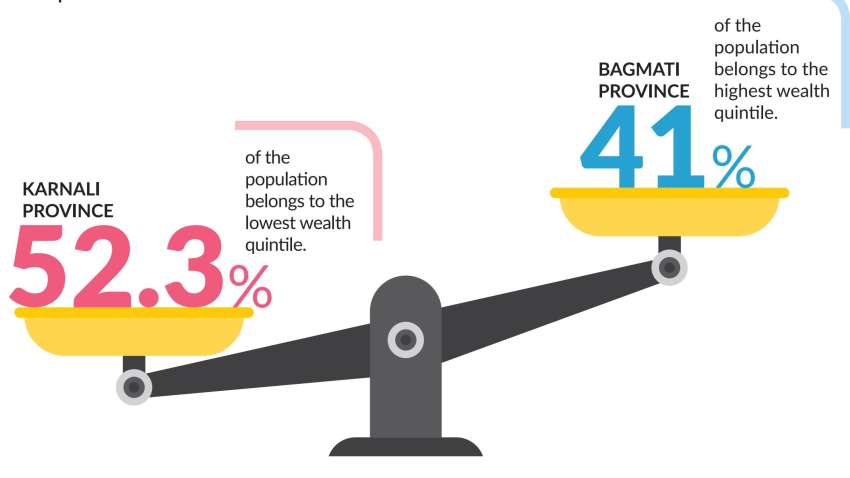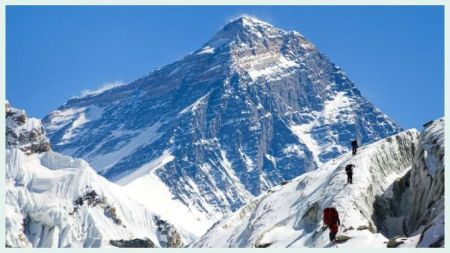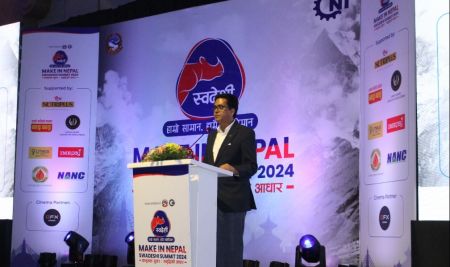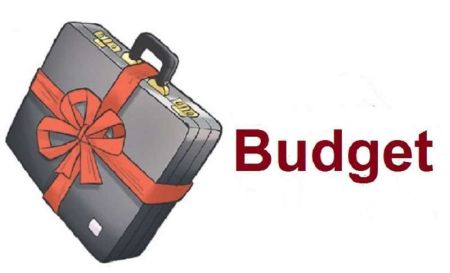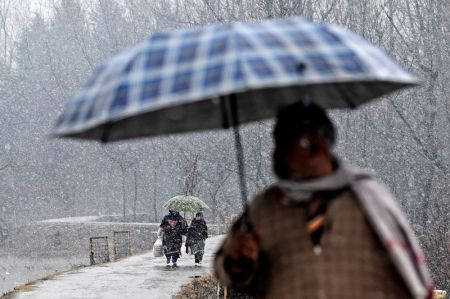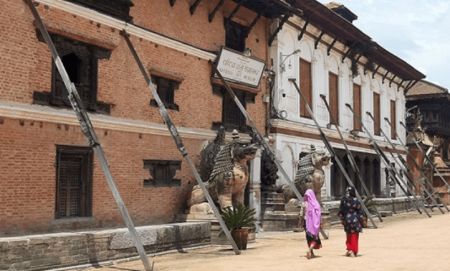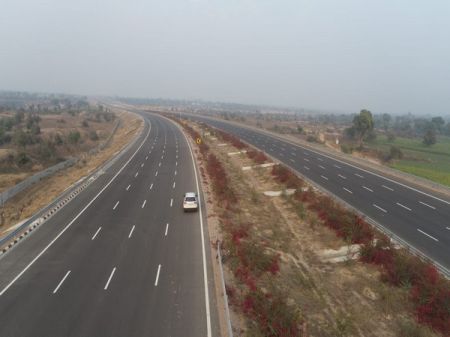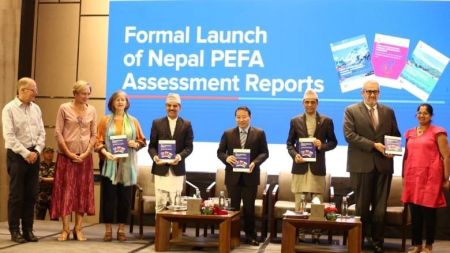While more Nepalis have risen above the poverty line in the last decade, the distribution of wealth has not been equitable across the nation.
NewBiz Report
Despite a decrease in Nepal's poverty rate from 25.16% to 20.27% over 12 years, the enduring reality remains: the gap between the wealthiest and the poorest Nepalis persists. While more Nepalis have risen above the poverty line in the last decade, the distribution of wealth has not been equitable across the nation.
The most recent report of the National Statistics Office (NSO), titled 'Population Composition of Nepal,' clearly shows an unequal distribution of wealth among the provinces. As anticipated, Bagmati Province - home to the country's federal capital Kathmandu - boasts the highest proportion of its population residing in the top wealth quintile. The province stands out as a hub of affluence with 41% of its population placed in the highest wealth quintile. This concentration of prosperity suggests robust urbanisation, commercial development, and ample access to education and employment opportunities driving economic advantage within the province.
In Gandaki Province, 27.8% percent of the population are in the highest wealth quintile. This indicates a notable degree of economic stability and prosperity. Conversely, Karnali Province presents a starkly contrasting scenario, with a staggering 52.3% of its inhabitants residing in the lowest wealth quintile. This glaring disproportion underscores significant disparities in economic opportunity, access to resources and living standards. Factors such as geographical remoteness, limited infrastructure, and socio-economic marginalisation likely contributed to this imbalance in wealth distribution.
Sudurpaschim Province mirrors this trend, albeit to a somewhat lesser extent, with 32.8% of its population residing in the lowest wealth quintile. While not as severe as Karnali Province, this disparity highlights persistent challenges in addressing economic inequality and fostering inclusive growth within the province.
The report reveals that over two-fifths of households in the mountainous region (41.6%) fall within the lowest quintile, contrasting sharply with only 3% in the highest wealth quintile. When examining wealth quintile distribution, female-headed households showed a nearly equal distribution between the lowest and highest quintiles in the Koshi, Bagmati, Gandaki, and Lumbini provinces. However, in Madhesh, only 15% of female-headed households were in the highest quintile, while 23% were in the lowest quintile.
The prosperity disparity between Bagmati and other provinces becomes evident through its superior access to utilities and amenities. For instance, the province boasts the highest proportion of housing units with cement floors, standing at 71.6%, while only 14% of households in Karnali enjoy this amenity. In terms of access to banking services or vehicle ownership, Bagmati holds a distinct advantage over other provinces. According to the report, 72% of households in Bagmati and Gandaki have at least one member with a bank account, while the corresponding figure stands at only 55% in Koshi and Karnali Provinces.
Bagmati Province excels in various indicators of prosperity, boasting the highest proportion of households owning a four-wheeler and two-wheeler (6.4% and 35.8%, respectively). Furthermore, the province also leads in household ownership of refrigerators (36.7% percent) and washing machines (10.9%). Moreover, Bagmati stands out for having the highest proportion of households considered most adequate in terms of amenities (53.8%), followed by Gandaki (36.3%) and Lumbini (25%).
Experts say that the wealth disparity among provinces is closely linked to access to amenities, living standards and the value of properties they own. Dr Rudra Suwal, former deputy director general of the National Statistics Office, explained that this disparity was primarily due to the higher value of properties in Bagmati compared to Karnali. "For instance, a person owning four aanas of land in Kathmandu would possess greater wealth than someone owning several ropanis of land in Karnali," said Suwal. "This economic reality significantly contributes to the wealth disparity between Bagmati and Karnali."
In Kathmandu, people can leverage their wealth for consumption, a luxury not readily available to Karnali residents due to the limited earning potential from property sales in the region. "The enduring high value of land in areas with substantial economic activity, such as Bagmati, further exacerbates this wealth gap," Suwal added.
The reason behind Madhesh having fewer households in the highest wealth quintile is that, despite being more accessible than Karnali, inner Madhesh continues to suffer from neglect compared to the urban centres concentrated along highways. "The value of agricultural land in Madhesh is relatively lower compared to lands utilised for commercial purposes, which are predominantly concentrated along highways," explained Suwal.
However, a larger proportion of households in Madhesh fall into the higher-wealth quintile compared to Karnali and Sudurpaschim. According to the NSO report, 19.2% of households in Madhesh belong to the higher wealth quintile, whereas only 5.5% and 12.7% of households fall into this category in Karnali and Sudurpaschim, respectively.
According to economist Govinda Nepal, a former member of the National Planning Commission (NPC), significant outmigration of people of Madhesh to the Gulf and Malaysia for employment has contributed to maintaining Madhesh at a relatively higher position in the higher-wealth quintile compared to Karnali and Sudurpaschim provinces. "While many individuals from Karnali and Sudurpaschim migrate to India, their incomes tend to remain comparatively lower than those working in the Gulf and Malaysia," said Nepal.
Experts suggest that narrowing these regional disparities is a challenging task, especially with affluent individuals gravitating toward major urban centres like Kathmandu. "Individuals earning well in other provinces often relocate to Kathmandu, leading to the ongoing accumulation of wealth in the capital city," explained a former NPC vice-chairperson. "This perpetuates a vicious cycle."
To disrupt this cycle, the federal system was conceptualised to dismantle the Kathmandu-centric structure. However, concerns have arisen regarding the implementation of federalism, as the central government has faced accusations of retaining a significant portion of authority for itself. "We must stop the trend of centralising resources from rural areas to Kathmandu and major urban centres," Dr Jagadish Chandra Pokharel, a former vice chairperson of NPC, said. "There needs to be an environment that encourages people to reinvest in the areas where they initially established their businesses. Provincial and local governments have an important role to play in fostering such an environment."
Demographic Window of Opportunity
The NSO report indicates that Nepal has entered the demographic window and is poised to reap a demographic dividend.
The demographic dividend refers to the economic growth resulting from a shift in the age composition of a country's population. This change in age structure is typically brought about by declining fertility and mortality rates, leading to a decrease in the dependency ratio. As the working-age population expands relative to the dependent population, productivity among workers increases, consequently resulting in higher per capita income.
Nepal recorded a dependency ratio of 53.3 in 2021, accompanied by a Demographic Dividend Index (DDI) score of 75.3, as per the NSO report. These figures indicate that the country has achieved a certain level of demographic dividend and has already entered the demographic window of opportunity. The demographic window of opportunity had not yet been reached in Lumbini and Madhesh provinces, as well as other Tarai districts as of 2021, according to the NSO report. These regions exhibited lower-than-average socioeconomic development indices. Conversely, the demographic window was more apparent in urban municipalities compared to rural areas. Notably, it has already reached Kathmandu district, Bagmati Province, and the hilly region.
Experts say Nepal can capitalise on its demographic dividend if it can engage them more effectively in nation-building endeavours. Unfortunately, this opportunity is rapidly diminishing as the trend of outmigration persists. "We are currently in a phase where we could harness the demographic dividend of the country. However, this opportunity is slipping away due to the increasing outmigration of Nepali youths," said Suwal.
Individuals residing in Karnali Province possess less wealth compared to those living in Bagmati, a discrepancy inherently linked to the higher value of equivalent properties in Bagmati compared to Karnali. For instance, a person owning four aanas of land in Kathmandu would possess greater wealth than someone owning several ropanis of land in Karnali. This economic reality significantly contributes to the wealth disparity between Kathmandu and Karnali.
In Kathmandu, individuals can leverage their wealth for consumption, a luxury not readily available to Karnali residents due to the limited earning potential from property sales in the region. The enduring high value of land in areas with substantial economic activity, such as Bagmati, further exacerbates this gap.
Despite being more accessible than Karnali, inner Madhesh continues to suffer from neglect compared to the urban centres concentrated along highways. The province also lags in terms of human development. The value of agricultural land in Madhesh is relatively lower compared to land plots utilised for commercial purposes, which are predominantly concentrated along highways. Consequently, the population falling within the high-wealth quintile is also low in Madhesh.
The disparity in wealth quintiles should be examined within the context of regional development status. Housing quality in Karnali, Sudurpashchim, and Madhesh provinces is notably poor, and household assets in these provinces hold lesser value compared to regions with higher wealth quintiles.
The significant outmigration of Madhesh residents to the Gulf and Malaysia for employment has contributed to maintaining Madhesh at a relatively higher position in the wealth quintile compared to Karnali and Sudurpaschim provinces. Conversely, many individuals from Karnali and Sudurpaschim migrate to India, where their incomes tend to remain comparatively lower than those working in the Gulf and Malaysia. Otherwise, there wouldn't be a significant difference between Madhesh and Karnali, along with Sudurpaschim, in terms of the proportion of the population falling within the low-wealth quintile. It is necessary to prioritise the delivery of development, infrastructure, and income generation initiatives in areas where wealth creation is severely limited.
If cities outside Kathmandu are to thrive, it is essential to create an environment where local residents invest within their own city, while also attracting investments from surrounding areas. Local cities should harness their own resources to foster growth and prosperity. Currently, resources from small cities and rural areas are being centralised in Kathmandu. For instance, individuals who earn well outside the Kathmandu Valley often relocate to Kathmandu, perpetuating the cycle of wealth accumulation in the capital. This creates a vicious circle that needs to be addressed. We must stop the trend of centralising resources from rural areas to Kathmandu and major urban centres. Instead, we need to create an environment where people are inclined to invest in the areas where they initially established their businesses. Provincial and local governments have a significant role to play in fostering such an environment. The federal system was envisioned to break down this Kathmandu-centric structure and disrupt this cycle.


